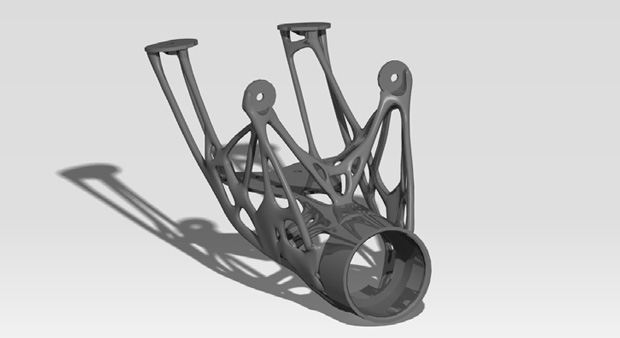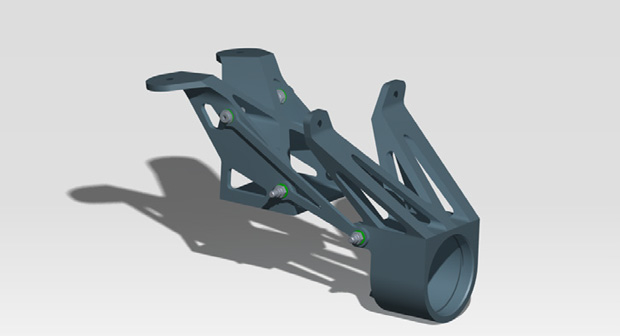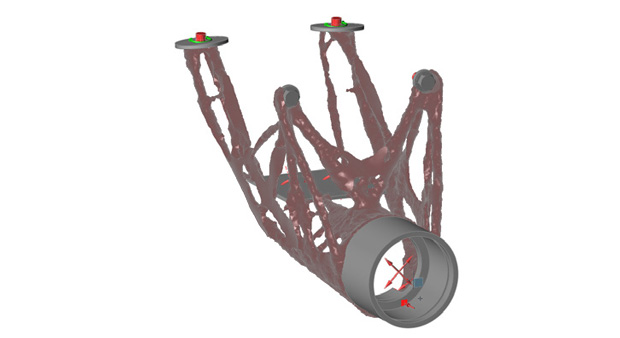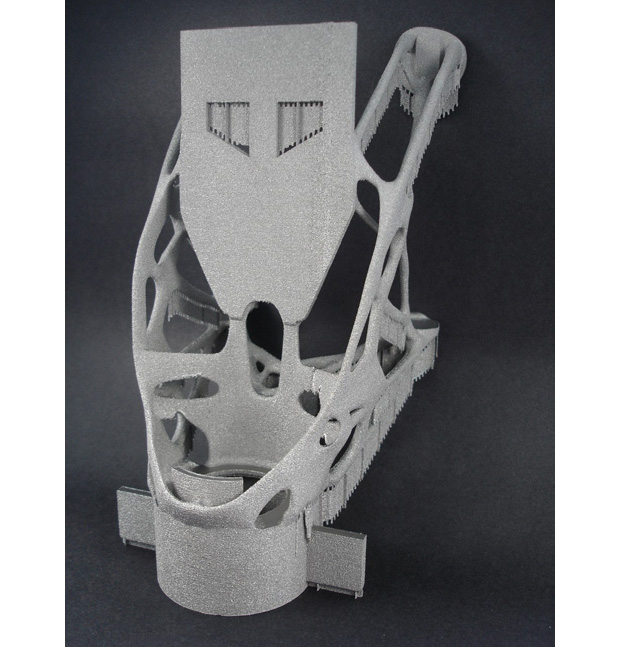
Rendering of new steering column after refinement with PolyNURBS. Image courtesy of solidThinking.
Latest News
January 3, 2017
Michael Süß is a Research Fellow at the Technische Universität Dresden who is currently working on his doctorate focusing on design guidelines for additive manufacturing/electron beam melting. In addition to this, Süß also works closely with the Fraunhofer Institute for Manufacturing Technology and Advanced Materials IFAM. The Fraunhofer IFAM is one of Europe’s leading research institutions in the fields of adhesive technology, material sciences and manufacturing techniques.
When looking for a demonstrator to design as a portion of his research, Süß thought back to his time working on a Formula Student team. “I had a history of working on a Formula Student team and wanted to help the current team at the Technische Universität Dresden out,” notes Süß. “I asked the ELBFLORACE Electric Formula Student Team to suggest a volunteer who is currently working on their project thesis to collaborate with on this project.” This is where Süß met Lucas Hofman, a current student at the Technische Universität Dresden.
Together, Süß and Hofman set out to find a current part on the car that made the most sense to be redesigned for additive manufacturing/electron beam melting. Ultimately the part selected for the redesign was the steering column mount. “The current steering column mount had four different areas that were at different angles to each other, because of this, it was extremely difficult to produce with a 5-axis milling machine,” says Hofman. “The solution to produce this part consisted of four different milled aluminum parts that were all bolted together. We also discovered other parts that could ultimately be redesigned for additive manufacturing like the uprights, but we selected the steering column mount as we felt that with this part, we could make the largest performance and weight improvements.”
solidThinking Inspire in the Design Process
Süß and Hofman both learned about solidThinking Inspire in different ways. Süß was first introduced to Inspire at a workshop that took place at the international trade show, Euromold. Hofman was first introduced to the tool at a Formula Student workshop that his university was involved in. Both were immediately impressed with the ease of use of the tool. Süß notes: “I love how easy it is to use the PolyNURBS features, it allows us to quickly take optimization results and reconstruct the part so it is ready for manufacturing. In the past, this was always the most difficult part of working with optimizations. We no longer have to use multiple reverse engineering tools, we can now do it all within one tool, Inspire.” Süß and Hofman also noted the usefulness of the integrated analysis tools in Inspire, which allowed them to simulate real world conditions on the part.
Knowing that the goal was to produce the part using electron beam melting, Süß and Hofman knew that they would have great freedom when designing the part. Süß says: “Electron beam melting has a huge advantage over other manufacturing methods, it allowed us to be quite free with our design as there are very few design constraints.” With the knowledge that both Süß and Hofman had of Inspire, they determined that it was the ideal tool to perform both the optimization, as well as refinement and final preparation for manufacturing. “Inspire allowed us to determine the ideal material layout for the part and the PolyNURBS tools enabled us to get from the optimization to manufacturing extremely quickly. I would say that the entire part refinement process took only 5-7 hours, which is extremely quick,” says Hofman.
Once the part was redesigned based on the Inspire optimization results, the next step was to manufacture the part. The team worked with Franhaufer IFAM to complete the manufacturing. An Arcam A2X electron beam melting machine was used.
“The build time on the part was about 29 hours and the part was produced with a titanium alloy,” says Süß. “Electron beam melting was great for this process as you do not need as much support structure as you do with other additive manufacturing methods. Once post processing is complete, we expect the part to weigh 330g which is 35% lighter than the original part that was 500g. Without Inspire, the weight savings would not have been possible. Inspire and its PolyNURBS tools are quite impressive, it allowed us to move extremely fast from our optimization to the final manufactured part, we are definitely going to use Inspire more and more often in the future.”
What’s Next?
The new steering column mount is now in the post-processing phase. Süß and Hofman are hoping that it will be ready to be included on the Formula vehicle very soon. After their incredibly successful usage of Inspire including impressive weight savings and performance increases, both Süß and Hofman say they plan to use the tool more in the future. Lucas even noted that he plans to use it for his diploma thesis.
More Info
Subscribe to our FREE magazine, FREE email newsletters or both!
Latest News










